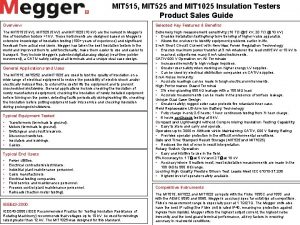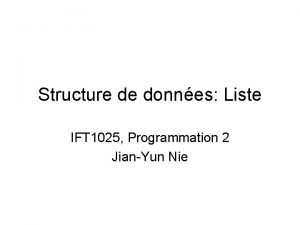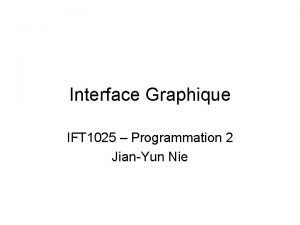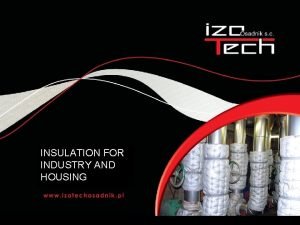MIT 515 MIT 525 and MIT 1025 Insulation


- Slides: 2

MIT 515, MIT 525 and MIT 1025 Insulation Testers Product Sales Guide Overview Selected Key Features & Benefits The MIT 515 (5 k. V), MIT 525 (5 k. V) and MIT 1025 (10 k. V) are the newest in Megger’s line of insulation testers >1 k. V. These instruments are designed based on Megger’s extensive knowledge of insulation testing (100+ years of experience) and significant feedback from actual end users. Megger has taken the best insulation testers in the world and improved them to add functionality, make them easier to use and easier to transport. They include Megger’s patented digital/analog display (real-time pointer movement), a CATIV safety rating at all terminals and a unique dual case design. Extremely high measurement sensitivity (10 TΩ @ 5 k. V; 20 TΩ @ 10 k. V) • Enables installation testing/long-term trending of higher value apparatus. • Allows the end user to identify equipment problems earlier in life. 3 m. A Short Circuit Current with New Max Power Regulation Technology • Ensures maximum power transfer at 3 m. A whatever the load until 5 k. V or 10 k. V is reached; outperforms many 5 m. A rated instruments. CATIV 600 V Operation on All Terminals • Increased immunity to high voltage impulses. • Greater user safety when working on higher energy LV supplies. • Can be used by electrical distribution companies on CATIV supplies. 3 m. A Noise Immunity • Accurate readings can be made in tough electrical environments. High Performance Guard Terminal • 2% error guarding 500 kΩ leakage with a 100 MΩ load. • Accurate measurements can be made in the presence of surface leakage. Unique Dual Case Design • Greater safety; rugged outer case protects fire retardant inner case. Field Replaceable Lithium Ion Battery Technology • Fully charge in only 2. 5 hours; 1 hour continuous testing from ½ hour charge. • 6 hours continuous testing at 5 k. V. Compact and Lightweight without Compromising Insulation Testing Capability • Easy to store and carry and operate. Operates up to 3000 m Altitude while Maintaining CATIV, 600 V Safety Rating • Provides operator protection in the difficult environmental conditions. Date and Time Stamped Result Storage (MIT 525 and MIT 1025) • Reduces the risk of error in result interpretation. Rotary Switch Operation • Easy and intuitive to use in the field. 5% Accuracy to 1 T at 5 k. V and 2 T at 10 k. V • Accuracy where it matters most; most substation measurements are made in the 100 G to 500 G range. Locking High Quality Flexible Silicon Test Leads Meet IEC 61010 -31: 208 • Highest level of operator safety available. General Applications and Uses The MIT 515, MIT 5252 and MIT 1025 are used to test the quality of insulation on a wide range of electrical equipment to reduce the possibility of electric shock and/or electrically induced fires, to extend the useful life the equipment and to prevent unscheduled shutdowns. General applications include checking the insulation of newly manufactured equipment, checking the insulation of newly installed equipment before turning on the power, detecting faults periodically during working life, checking the insulation before putting equipment back into service and checking insulation during prolonged shutdowns. Typical Equipment Tested • • • Transformers (terminals to ground). Motors (terminals to ground). Switchgear and circuit breakers. Disconnect switches. Insulators and bushings. Cables. Typical End Users • • Power utilities. Electrical contractors/electricians. Industrial plant maintenance personnel. Cable manufacturers. Electrical testing companies. Field service and maintenance personnel. Process control plant maintenance personnel. Railroads (traction motor testing). IEEE 43 -2000 (IEEE Recommended Practice for Testing Insulation Resistance of Rotating Machinery) recommends that voltages up to 10 k. V be used for windings rated greater than 12 k. V. The MIT 1025 was designed for this standard. Competitive Instruments The MIT 515, MIT 522 and MIT 1025 compete with the Fluke 1550 C and 1555 and with the AEMC 5050 and 5060. Megger’s accuracy spec far outstrips all competitors. Fluke’s measurement range is especially poor at 1 TΩ/2 TΩ. The Megger units also have the best IP rating (the Fluke unit is rated IP 40, meaning no protection against ingress from liquids). Megger offers the highest output current, the highest noise immunity and the best guard terminal performance, all key factors in ensuring accuracy in real-world conditions.

Competitive Comparison CATIV 600 V CATIV effectively means that the instrument is protected for use on outside applications. 600 V means the instrument is protected against connection to a system up to 600 V phase to ground. It is protected against impulses up to 8 k. V. Be sure to check specifications and the user manual of any non-Megger units to ensure that the CAT rating applies to all terminals. Guard Terminal The guard terminal is used to remove the effects of surface leakage from the measurement, which is critical when measuring in the TΩ range. It also provides diagnostic capability by allowing the operator to detect surface leakage across the insulation and can indicate that the insulation surface may require simple cleaning. When in use, the guard terminal performance is part of the measurement uncertainty, making it important that it has a specification. The Specification should be stated as X% error guarding YYY k leakage with a ZZZ M load. Catalog # Model # Description 1001 -936 MIT 515 5 k. V Insulation Tester; Auto IR, PI 1001 -940 MIT 525 5 k. V Insulation Tester; Auto IR, PI, SV, DD, Ramp; Data Storage and Downloading 1001 -944 MIT 1025 10 k. V Insulation Tester; Auto IR, PI, SV, DD, Ramp; Data Storage and Downloading



